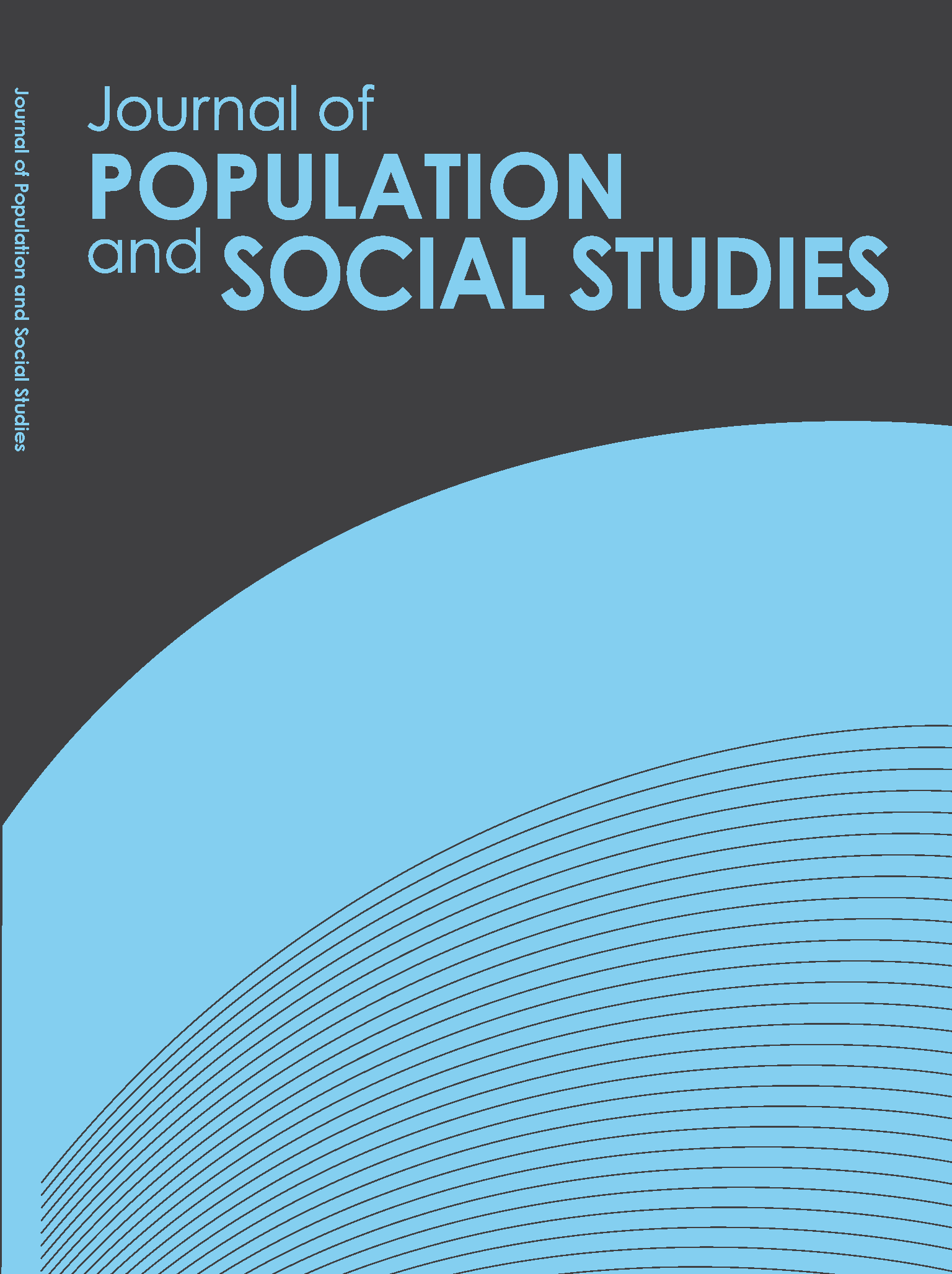Elderly Poverty in Vietnam: Trends and Determinants
Main Article Content
Abstract
Adopting data from the 2010 and 2016 Vietnam Household Living Standard Surveys, this paper identifies factors of elderly poverty incidences and depth in Vietnam. Our analysis shows that overall, elderly poverty is lower than the overall poverty headcount in Vietnam. Yet, some elderly groups are more vulnerable to poverty than others. In particular, the elderly living in rural areas are more susceptible to poverty than those living in urban areas. The ethnic minority elderly are likewise more vulnerable to poverty than those who belong to the Kinh-Hoa ethnic majority. We found several determining factors for elderly poverty in urban and rural areas, including region, ethnicity, education, and household age composition. Remittances and social assistance are also crucial in reducing elderly poverty in rural areas. With these findings, this study proposes several policy implications, including improving the social assistance support for the elderly, reducing regional and ethnic disparities, and supporting the employment of older people.
Article Details
References
• Alkire, S., & Foster, J. (2011). Counting and multidimensional poverty measurement. Journal of Public Economics, 95(7–8), 476–487. https://doi.org/10.1016/j.jpubeco.2010.11.006
• ASEAN Post. (2020, February 16). Southeast Asia’s rapidly ageing population. https://theaseanpost.com/article/southeast-asias-rapidly-ageing-population
• Asian Development Bank. (2021, June 14). Population and Aging, Asia and the Pacific [Population Aged 65 and Older, 1950–2100]. Asian Development Bank. https://data.adb.org/dataset/population-and-aging-asia-and-pacific
• Barrientos, A., Gorman, M., & Heslop, A. (2003). Old age poverty in developing countries: Contribution and dependence in later life. World Development, 31(3), 555–570. https://doi.org/10.1016/S0305-750X(02)00211-5
• Chuong, N. V., & Linh, V. H. (2018). The impact of migration and remittances on household welfare: Evidence from Vietnam. International Migration & Integration, 19, 945–963. https://doi.org/10.1007/s12134-018-0571-3
• Deaton, A., & Paxson, C. (1995). Measuring poverty among the elderly. NBER working paper, 5296. https://ideas.repec.org/p/nbr/nberwo/5296.html
• Demombynes, G. (2013, October 15). Why is ethnic minority poverty persistent in Vietnam? World Bank Blogs. https://blogs.worldbank.org/eastasiapacific/why-ethnic-minority-poverty-persistent-vietnam
• Duclos, J. Y., & Tiberti, L. (2016). Multidimensional Poverty Indices: A Critical Assessment. In M. D. Adler & M. Fleurbaey (Eds.), The Oxford Handbook of Well-Being and Public Policy (pp. 1–34). Oxford University Press. https://doi.org/10.1093/oxfordhb/9780199325818.013.19
• Evans, M., Gough, I., Harkness, S., McKay, A., Dao, T. H., & Do, L. T. N. (2007). The relationship between old age and poverty in Viet Nam. Viet Nam Policy Dialogue Paper No. 2007-08. https://www.vn.undp.org/content/vietnam/en/home/library/poverty/the-relationship-between-old-age-and-poverty-in-viet-nam.html
• Foster, J., Greer, J., & Thorbecke, E. (1984). A class of decomposable poverty measures. Econometrica, 52, 761-766. https://doi.org/10.2307/1913475
• Gasparini, L., Alejo, J., Haimovich, F., Olivieri, S., & Tornarolli, L. (2007). Poverty among the elderly in Latin America and the Caribbean. MPRA Paper, 42957. https://mpra.ub.uni-muenchen.de/42957/
• General Statistics Office. (2011). Population Projections for Viet Nam, 2009-2049. Statistical Publishing House. https://vietnam.unfpa.org/en/publications/population-projections-viet-nam-2009-2049
• General Statistics Office. (2012). Result of the Vietnam household living standards survey 2010. Statistical Publishing House. https://www.gso.gov.vn/wp-content/uploads/2019/03/KSMS2010_ban-in-1.pdf
• General Statistics Office. (2018). Result of the Vietnam household living standards survey 2016. Statistical Publishing House. https://www.gso.gov.vn/wp-content/uploads/2019/04/VHLSS-2016-1.pdf
• Giang, L. T., & Pfau, W. D. (2009). The vulnerability of the Vietnamese elderly to poverty: Determinants and policy implications. Asian Economic Journal, 23(4), 419-437. https://doi.org/10.1111/j.1467-8381.2009.02022.x
• HelpAge International. (2019, October 30). Ageing population in Vietnam. HelpAge Asia. https://ageingasia.org/ageing-population-vietnam/
• Kidd, S., Gelders, B., & Tran, A. (2019). Potential impacts of social pensions in Viet Nam. International Labor Organization. https://www.developmentpathways.co.uk/wp-content/uploads/2019/11/Potential-impacts-of-social-pensions-in-Viet-Nam.pdf
• Lo, T. D. (2019, December 3). Multidimensional Poverty in Viet Nam: Sustainable Poverty Reduction 2016–2020. Multidimensional Poverty Peer Network. https://mppn.org/multidimensional-poverty-viet-nam/
• Long, G. T., & Pfau, W. D. (2009). Ageing, poverty and the role of a social pension in Vietnam. Development and Change, 40(2), 333-360. https://doi.org/10.1111/j.1467-7660.2009.01517.x
• Mapa, D. S., Bersales, L. G. S., Albis, M. L. F, & Daquis, J. C. P. (2011). Determinants of poverty in elderly-headed households in the Philippines. MPRA Paper, 28557. https://mpra.ub.uni-muenchen.de/28557/1/MPRA_paper_28557.pdf
• Nguyen, C. (2016). The aging trend and related socioeconomic issues in Vietnam. MPRA Paper, 81825. https://mpra.ub.uni-muenchen.de/81825/1/MPRA_paper_81825.pdf
• Nguyen, L. D., Raabe, K., & Grote, U. (2015). Rural-urban migration, household vulnerability, and welfare in Vietnam. World Development, 71, 79-93. https://doi.org/10.1016/j.worlddev.2013.11.002
• Pal, S., & Palacios, R. (2011). Understanding poverty among the elderly in India: Implications for social pension policy. The Journal of Development Studies, 47(7), 1017-1037. https://doi.org/10.1080/00220388.2010.509783
• Pimhidzai, O. (2018). Climbing the ladder: Poverty reduction and shared prosperity in Vietnam (World Bank Group, Working paper No. 124916). https://documents.worldbank.org/en/publication/documents-reports/documentdetail/206981522843253122/climbing-the-ladder-poverty-reduction-and-shared-prosperity-in-vietnam
• Priebe, J. (2017). Old‐age poverty in Indonesia: Measurement issues and living arrangements. Development and Change, 48(6), 1362-1385. https://doi.org/10.1111/dech.12340
• Rani, U., & Schmid, J. P. (2007). Household characteristics, employment and poverty in India. Proceeding of the 2nd IZA/World Bank Conference on Employment and Development. http://conference.iza.org/conference_files/worldb2007/rani_u3394.pdf
• Ravallion, M. (2011). On multidimensional indices of poverty. Journal of Economic Inequality, 9, 235–248. https://doi.org/10.1007/s10888-011-9173-4
• Rodrigues, I. P., & Rueanthip, K. (2019). Does being old mean being poor? Evidence from Thailand. DLSU Business & Economics Review, 29(1), 165-177. http://dlsu-ber.com/wp-content/uploads/2019/07/14rodriguez-0719-revised.pdf
• United Nations Development Programme (UNDP). (2020). Human Development Report 2020. United Nations Development Programme. http://hdr.undp.org/sites/default/files/hdr2020.pdf
• Vietnam News Agency. (2017, September 10). Vietnam prepares to support aging population. https://en.vietnamplus.vn/vietnam-prepares-to-support-aging-population/117640.vnp
• Wooldridge, J. M. (2010). Econometric Analysis of Cross Section and Panel Data. The MIT Press. http://www.jstor.org/stable/j.ctt5hhcfr
• World Bank. (2012). Well begun, not yet done: Vietnam’s remarkable progress on poverty reduction and the emerging challenges. World Bank. http://hdl.handle.net/10986/12326
• World Bank, & Ministry of Planning, and Investment of Vietnam. (2016). Vietnam 2035: Toward Prosperity, Creativity, Equity, and Democracy. World Bank. http://hdl.handle.net/10986/23724


